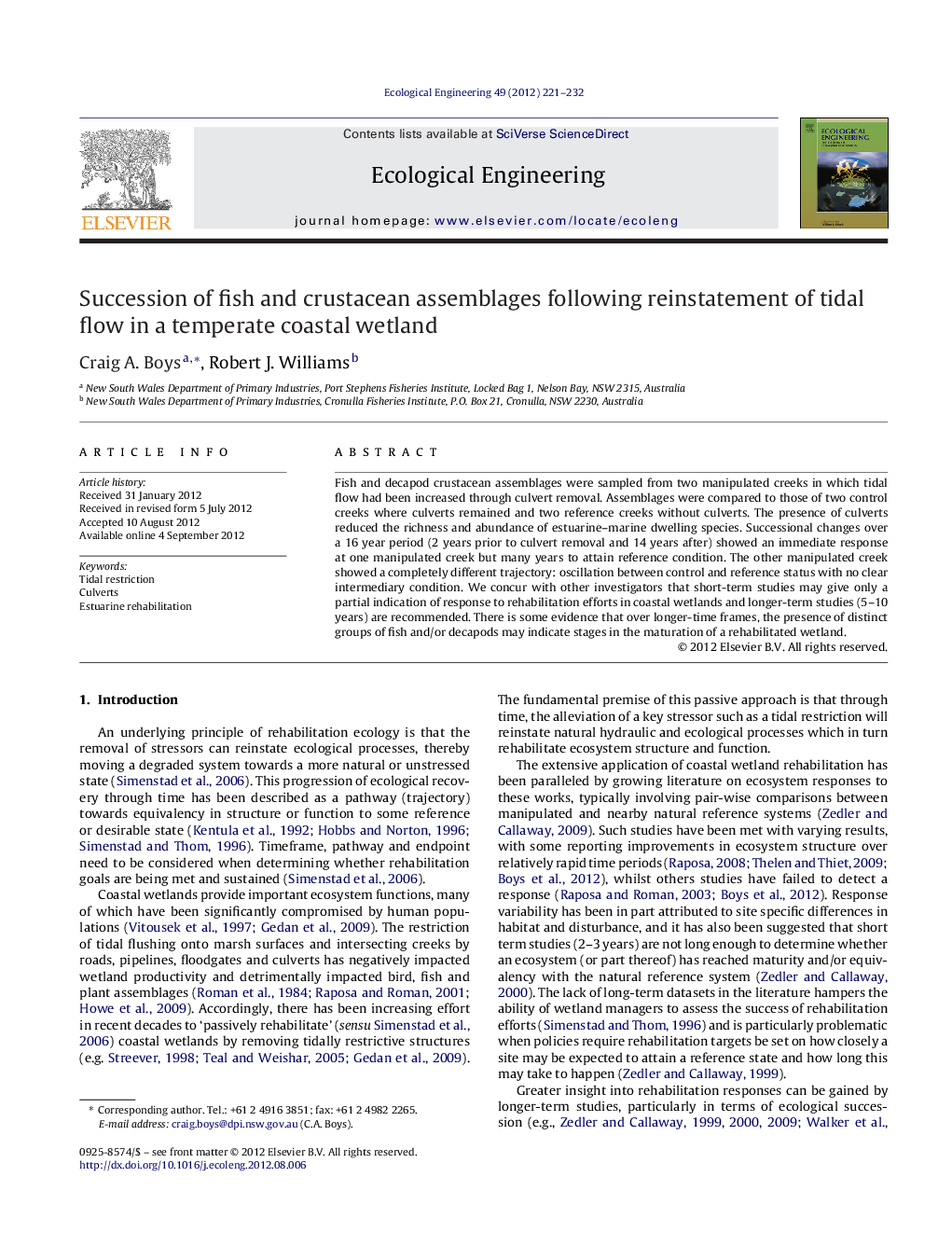| Article ID | Journal | Published Year | Pages | File Type |
|---|---|---|---|---|
| 4389907 | Ecological Engineering | 2012 | 12 Pages |
Fish and decapod crustacean assemblages were sampled from two manipulated creeks in which tidal flow had been increased through culvert removal. Assemblages were compared to those of two control creeks where culverts remained and two reference creeks without culverts. The presence of culverts reduced the richness and abundance of estuarine–marine dwelling species. Successional changes over a 16 year period (2 years prior to culvert removal and 14 years after) showed an immediate response at one manipulated creek but many years to attain reference condition. The other manipulated creek showed a completely different trajectory: oscillation between control and reference status with no clear intermediary condition. We concur with other investigators that short-term studies may give only a partial indication of response to rehabilitation efforts in coastal wetlands and longer-term studies (5–10 years) are recommended. There is some evidence that over longer-time frames, the presence of distinct groups of fish and/or decapods may indicate stages in the maturation of a rehabilitated wetland.
► Fish and decapod assemblages in tidal creeks restricted by culverts differ from those in unrestricted creeks. ► Culvert removal can lead to clear successional changes in fish and decapod assemblages, but creeks may not respond in similar ways. ► Short-term studies can give a partial indication of rehabilitation response in coastal wetlands. ► Distinct taxa may indicate successional stages in the maturation of a rehabilitated wetland.
